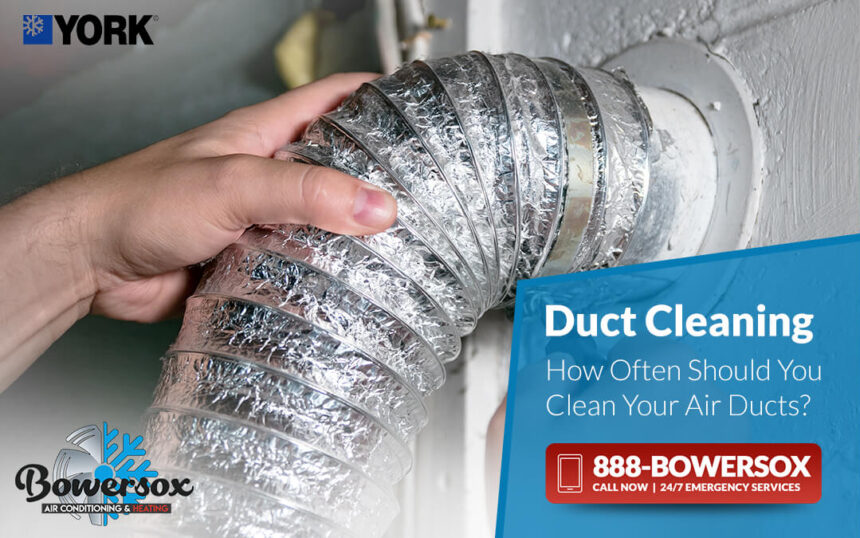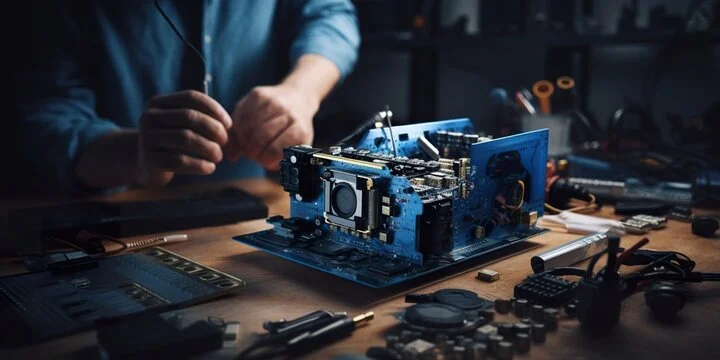Air ducts play a vital role in maintaining indoor air quality and ensuring the efficient operation of heating, ventilation, and air conditioning (HVAC) systems. Regular cleaning of air ducts is essential to remove dust, allergens, and contaminants, thereby improving overall air quality and HVAC performance. However, determining how often to clean your air ducts depends on several factors. Here’s a comprehensive guide on the optimal frequency for air duct cleaning:
General Recommendations
Every 3 to 5 Years: Experts, including the National Air Duct Cleaners Association (NADCA), generally recommend cleaning air ducts every three to five years. This timeframe is typically sufficient for maintaining clean and efficient air ducts under normal conditions.
New Home or Post-Renovation: After moving into a new home or completing significant renovations, it’s advisable to clean the air ducts. Construction and renovation work can introduce substantial dust and debris into the ducts, affecting indoor air quality.
Presence of Pets: Homes with pets may require more frequent cleaning, typically every two to three years. Pet hair and dander can accumulate in air ducts, potentially impacting air quality if not addressed regularly.
Allergies or Respiratory Issues: For households with allergy sufferers or individuals with respiratory conditions like asthma, more frequent cleaning—about every one to two years—may be necessary. Air ducts can harbor allergens and irritants that worsen these conditions.
Signs That Indicate Cleaning Is Needed
Visible Mold Growth: Mold growth inside air ducts or on HVAC components requires immediate cleaning due to health risks associated with mold exposure.
Excessive Dust and Debris: Unusually high levels of dust around vents and registers indicate that air ducts may be circulating dust throughout the home, signaling a need for cleaning.
Rodent or Insect Infestation: Infestations in air ducts necessitate cleaning to prevent contamination and unpleasant odors caused by pests.
Unexplained Allergy Symptoms: If household members experience unexplained allergies or respiratory issues, dirty air ducts could be a contributing factor, necessitating cleaning.
Reduced HVAC Efficiency: Dirty air ducts can obstruct airflow, forcing HVAC systems to work harder and reducing efficiency. Cleaning can restore optimal system performance.
Benefits of Regular Air Duct Cleaning
- Improved Indoor Air Quality: Removal of dust, allergens, and contaminants enhances indoor air quality, promoting a healthier living environment.
- Enhanced HVAC Efficiency: Clean air ducts facilitate better airflow, allowing HVAC systems to operate more efficiently and potentially reducing energy costs.
- Extended HVAC Lifespan: Regular cleaning reduces strain on HVAC systems, helping to prolong their operational lifespan and prevent costly repairs.
- Odor Reduction: Cleaning eliminates musty odors caused by mold, mildew, or accumulated debris, improving overall air freshness.
Conclusion
The frequency of air duct cleaning should be based on factors such as living conditions, pet ownership, and household health considerations. While a general guideline suggests cleaning every three to five years, specific circumstances may require more frequent attention. Regular monitoring and maintenance of air ducts ensure a cleaner, healthier, and more efficient home environment. If signs like mold growth, excessive dust, or reduced HVAC efficiency are noticed, scheduling professional air duct cleaning in Denver or your local area is recommended to promptly address these issues.
This version maintains the original content’s structure while enhancing clarity and readability. Let me know if you need any further adjustments.




